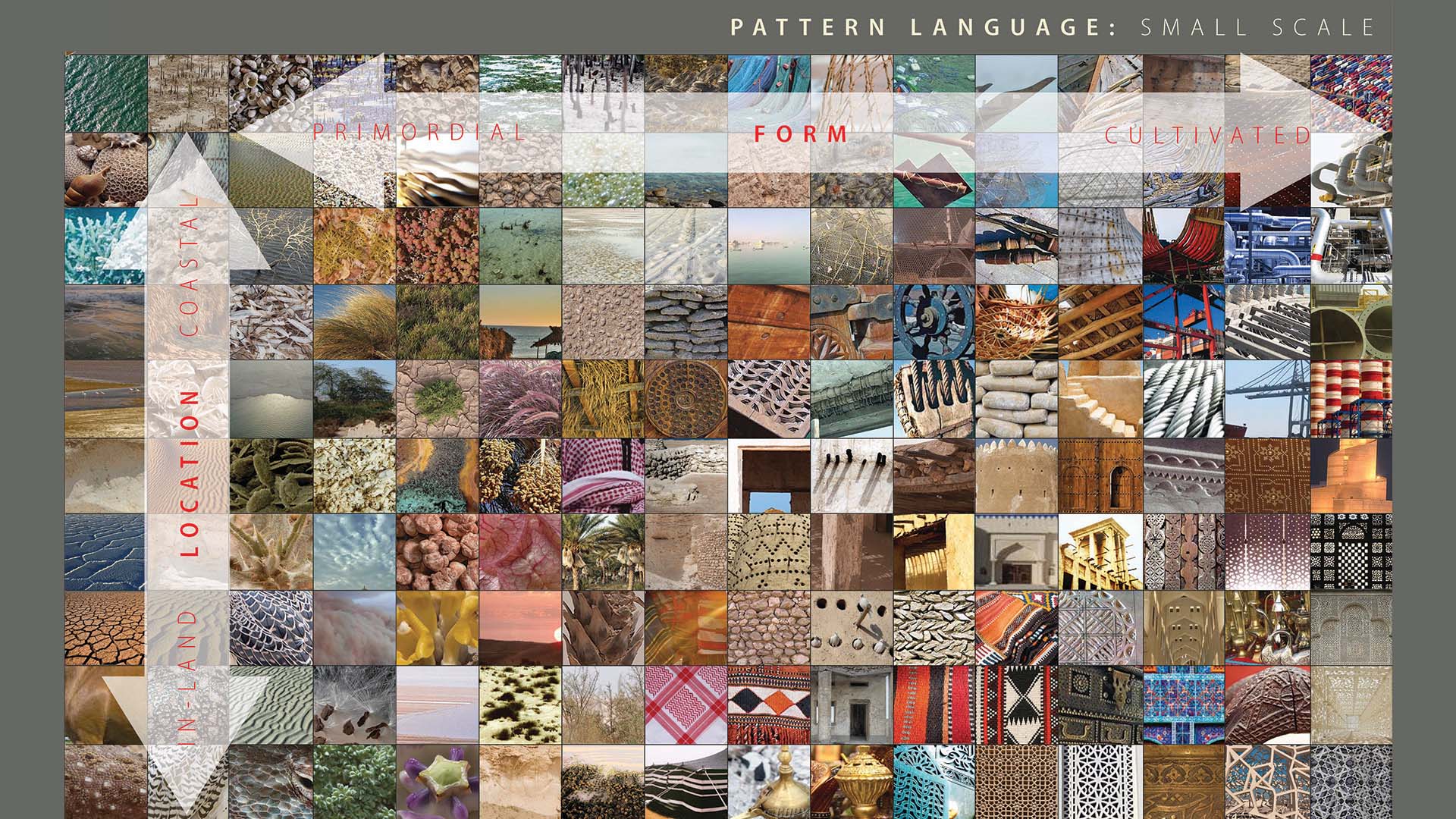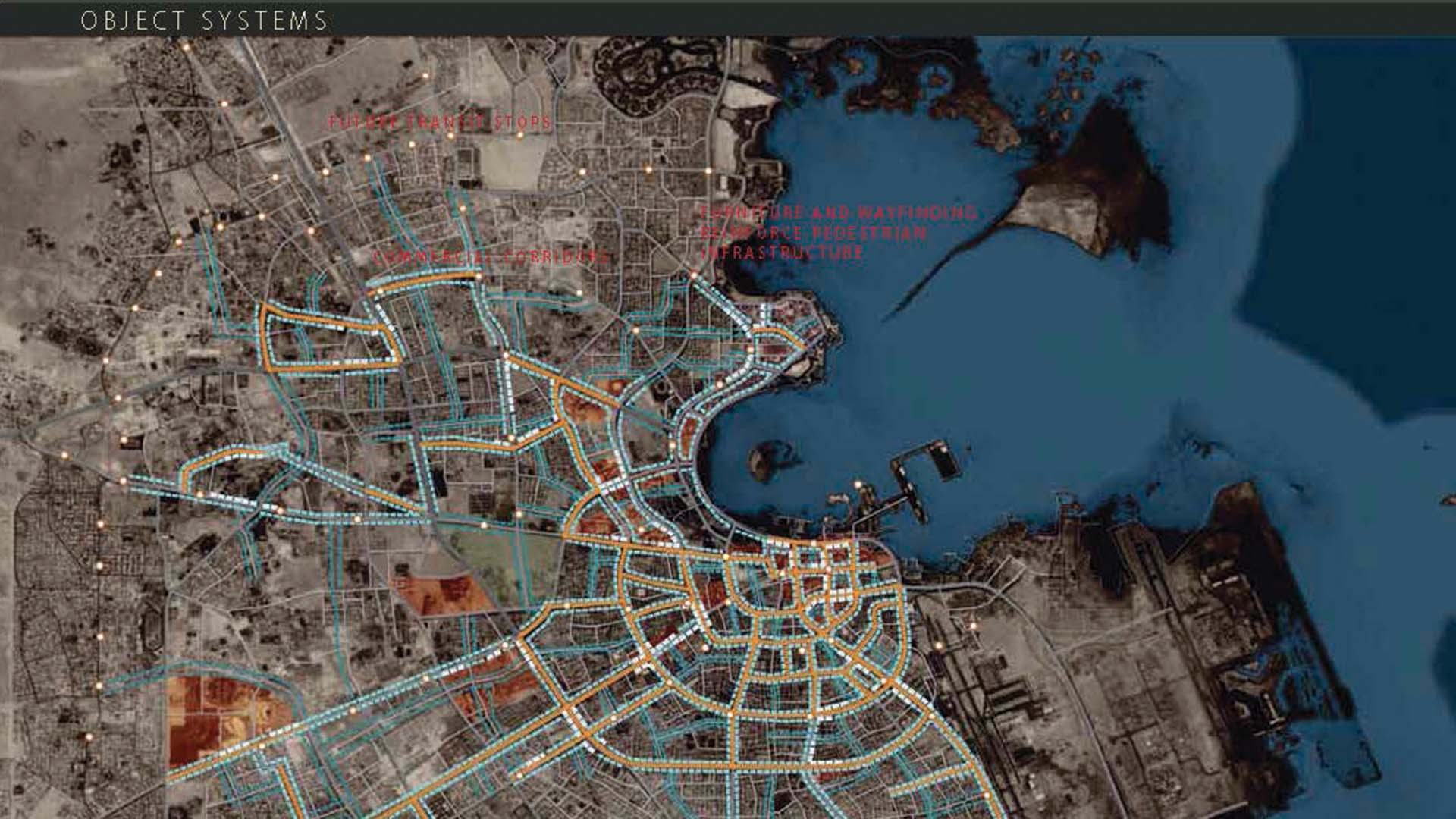SWA’s set of illustrative Design Guidelines promotes a public realm that is a relaxed manifestation of the Qatari vernacular landscape, and serve to maintain the locale’s cultural integrity. Unique among the fast-growing areas of the Gulf region, Doha’s landscape reflects a balance of cultural imports and exports. SWA’s design proposal seeks to manifest the Qatari spirit into all aspects of the city’s public realm. Regional aesthetics such as native desert, coastal, and agrarian patterns inform the design systems; selected materials weather comfortably in the salty desert climate and build a patina over time (copper, bronze, Corten, and desert stone among them); attention to the severe heat is addressed in the provision of shading structures and tree canopy to increase pedestrian comfort; planting is laid out in forgiving informal drift patterns rather than in grids to make inevitable plant mortality less noticeable. Climate sensitivity in the design is complemented by protection from traffic and pollution, prioritizing physical and cultural comfort for all Doha’s residents and visitors.
Tata Eco City
At the crossroads of ecology and community, this master plan synergizes a unique blend of spaces that support active lifestyles and foster innovation and creativity. Tata Eco City Master Plan was been developed layer by layer, using a set of strategic design interventions to help ensure that the delicate balance between nature and the built environment is prot...
Santana Row
SWA provided full landscape architectural services for the development of a neo-traditional town center near downtown San Jose. The client’s vision called for a variety of design styles to create a town center with an impression of growth over time. This theme is expressed in building elevations as well as landscape design. The restaurants and boutique r...
Houston Resilience Hub Network Master Plan
The Houston Resilience Hub Network Master Plan aims to mitigate the disproportionate impact of disasters on vulnerable communities by establishing a network of strategically located facilities. These hubs offer vital resources and support during routine operations, emergencies, and recovery phases.
The network comprises four interconnected components: H...
Fort Wayne Riverfront
As a city that was built and thrived because of its location as a crossroads between wilderness and city, farm and market, the realities of infrastructure both natural and man-made are at the heart of Fort Wayne’s history. We consider waterways as an integral part of open spaces of the City, forming a series of infrastructural systems that affect the dynamics ...








